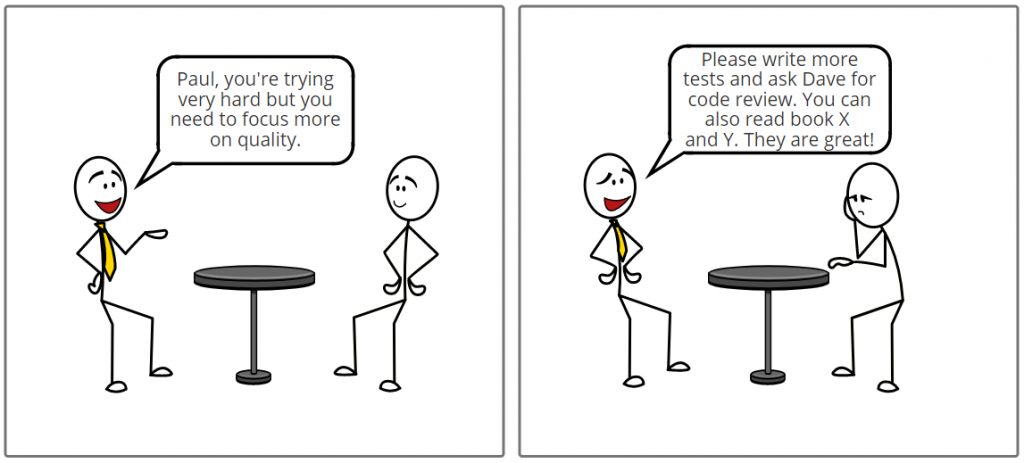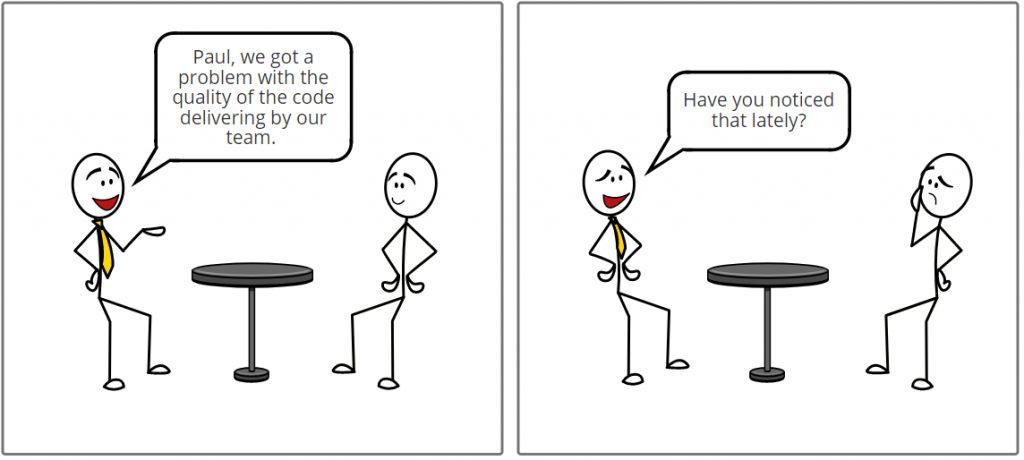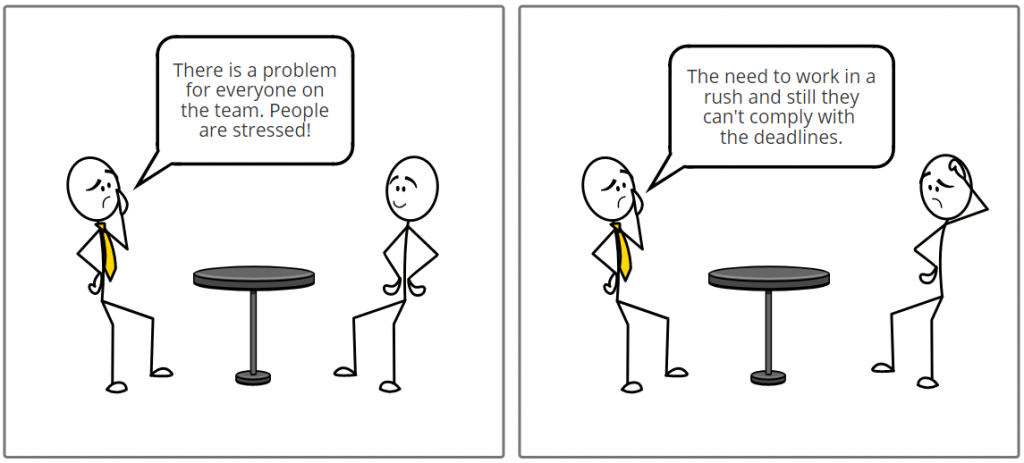
One study conducted by Jack Zenger and Joseph Folkman found that 74% of employees who received negative feedback already knew there was a problem. It shows that employees are not blind to their weaknesses. Perhaps they are just not sure how to improve their skills or they don’t realize how their problem affects the rest of their team.
Paul, a software engineer
Meet Paul. Paul is a software engineer. He’s young, very energetic and he works really fast. He wants to complete as many tasks as he can in order to show off a little. But then it turns out that his code is full of bugs and as a result his whole team needs to fix it. So during a yearly review his manager shares the following feedback:

Is it really the best feedback a manager can provide? It’s a common mistake to deliver negative, aka constructive, feedback right away without a comprehensive analysis and to propose a cut-and-dry solution.
Cut-and-dry solution won’t fix the problem
When an employee receives any kind of feedback he can either treat it as a gift or an opportunity to use that proposed solution or just dismiss it and throw it in the trash. It means that you as a person giving the feedback have a 50% chance of success. How can you increase that number to a 100% and minimize the risk of offending your employee?
If after analyzing the problem you can already see how it can be fixed, that’s great. But for now keep it to yourself. What you need to do first is to present the situation and describe the exact problem:

Be specific and clear. You can give examples of situations which affect the whole team. Rely only on real data instead of just an opinion. It’s super important because if your argument relies just on your gut-feeling it can be easily rejected.

Moreover, make sure your example is understood by your colleague. Then once the recipient is aware of the problem you can start asking open-ended questions directing him at finding the solution. He should be the one responsible for finding the fix. It shows that you treat your teammate respecfully and believe that they’re experts.

This shouldn’t be presented as your idea
The best solution is the one created by the “problematic” employee himself or perhaps with minimal input from you. When someone finds a solution on his own he will treasure it like his most prized possession. If you propose a ready solution with no opportunity for a discussion that may end up diminishing his intrinsic motivation.
People engage eagerly in activities driven by intrinsic motivation and they find them quite satisfying. You should act as a coach. Ask questions, help find a solution and just be there to make sure the problem gets solved.
Of course, your expertise is valuable too so prepare several solutions in your head just in case. But let your employee find the answer first. Treat it as a puzzle. Don’t spoil it!